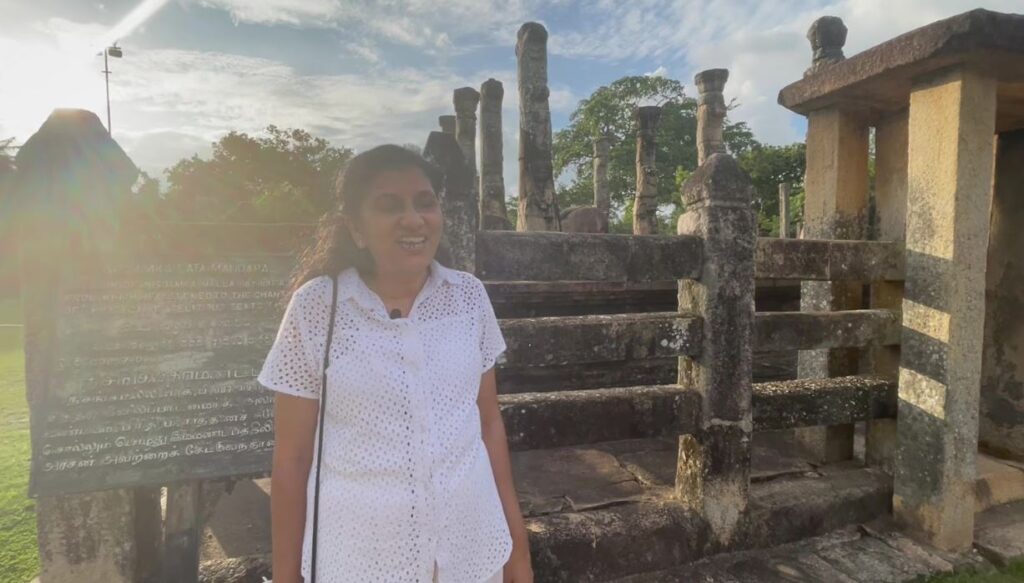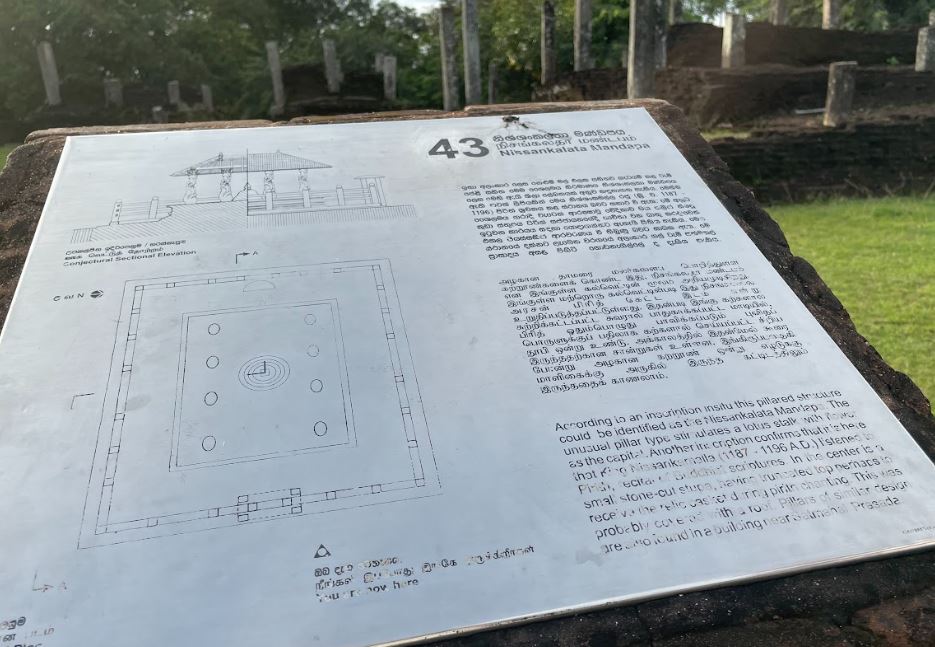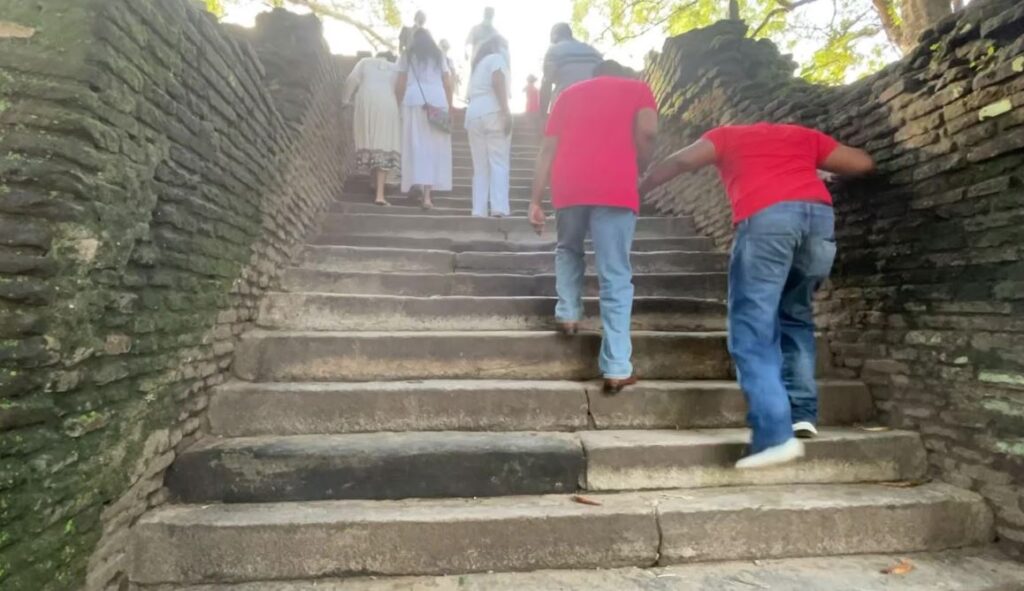When persons with disabilities travel to another location, especially if it is unknown, you are forcing your brain to deal with a continuous problem-solving process and overcoming challenges. Traveling mainly requires learning and memorizing the unknown until it becomes normal and familiar. This is a challenge for the brain and is like intense training. It is important to train and stimulate the brain because, over time, the more connections mean the greater cognitive reserve, thus making your brain more resistant to age-related decline or the symptoms of neurological disorders.
Manique Gunaratne created the opportunity for a group of persons with disabilities to visit the Nishshanka Latha Mandapaya in Polonnaruwa in January 2022.
Nishshanka Latha Mandapaya is a unique structure in the ancient city of Polonnaruwa in Sri Lanka. A màndapa is a pillared structure that is open on all sides and protects the person(s) inside from the sun with a roof. By definition, as of the 20th century, mándapas, as temporary structures, are built inside a house or a building and serve as recitation platform during remembrance ceremonies for the dead.
Built by King Nissanka Malla (1187-1196) and named after him, it is located near the western entrance of the Dalada Maluva, the area that contains the oldest and most sacred monuments in the city. A nearby stone inscription identifies this as the building used by Nissanka Malla to listen to pirith (chanting of Buddhist scriptures)
The structure is an elevated stone platform with a number of stone columns and surrounded by a low stone wall. These stone columns are the unique feature about the Nissanka Latha Manadapaya, since they are carved in a manner that is found nowhere else in the country. The eight granite columns are arranged in two rows, with four in each row. Presumably used to support a roof, each of them is approximately 8 feet 4 inches (2.54 m) in height. In each of these columns, the crown is carved in the shape of a blossoming lotus bud. The rest of the column is elaborately carved to resemble the stem of the flower.Unlike stone columns commonly seen in the architecture of this period, these are not straight, but are curved in three places. According to archaeologist Senarath Paranavithana, the stone columns at the Nissanka Latha Mandapaya are the best examples of this feature of ancient Sri Lankan architecture.
At the center of the platform, flanked by the stone columns, appears a small stupa. This is also made from stone, but the top part of it has been destroyed. Its base is decorated with a carved design. The platform is surrounded by a stone railing. The structure is entered through a single stone doorway. In contrast to the elaborately carved stone pillars, these have an undecorated and plain finish.










MANIQUE GUNARATNE
The Employers’ Federation of Ceylon,
385 J3 Old Kotte Road,
Rajagiriya,
Sri Lanka.